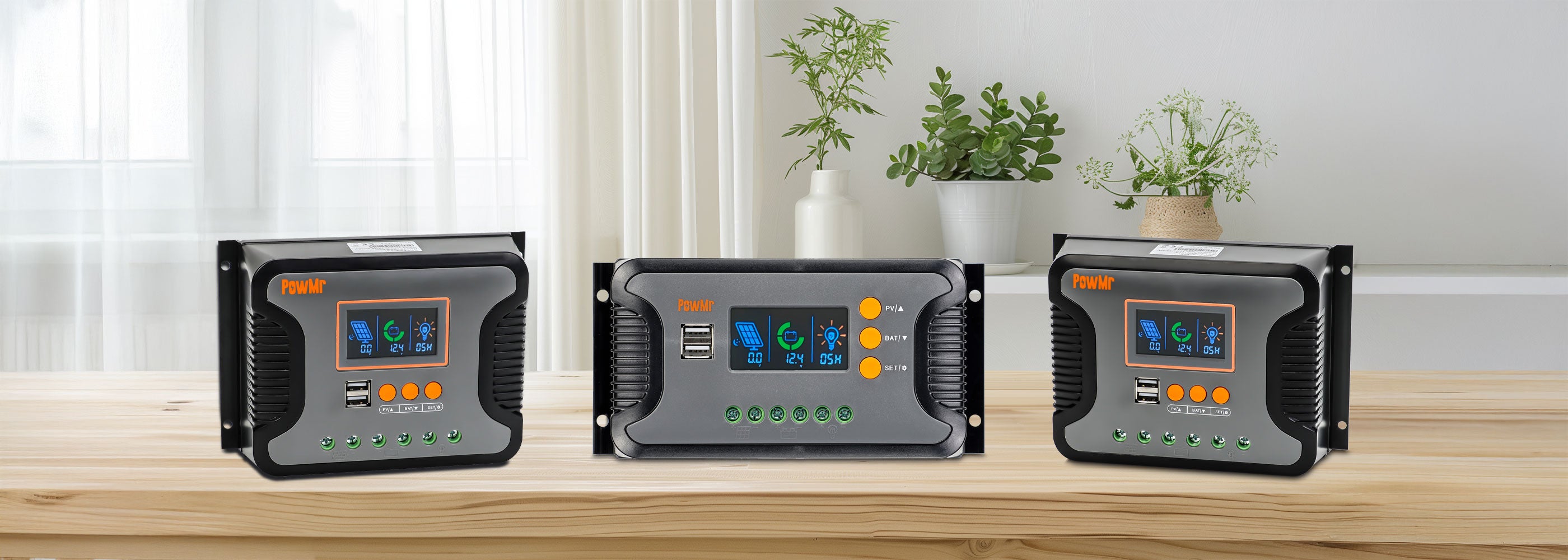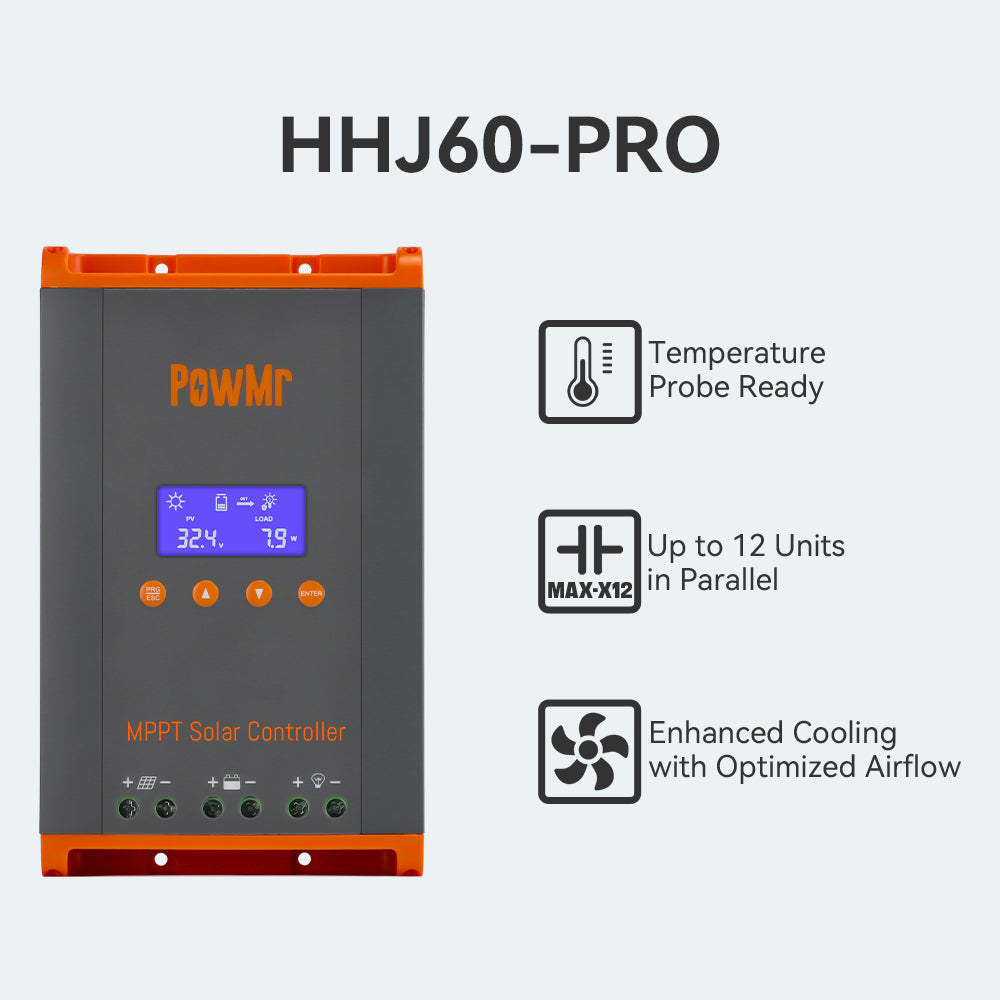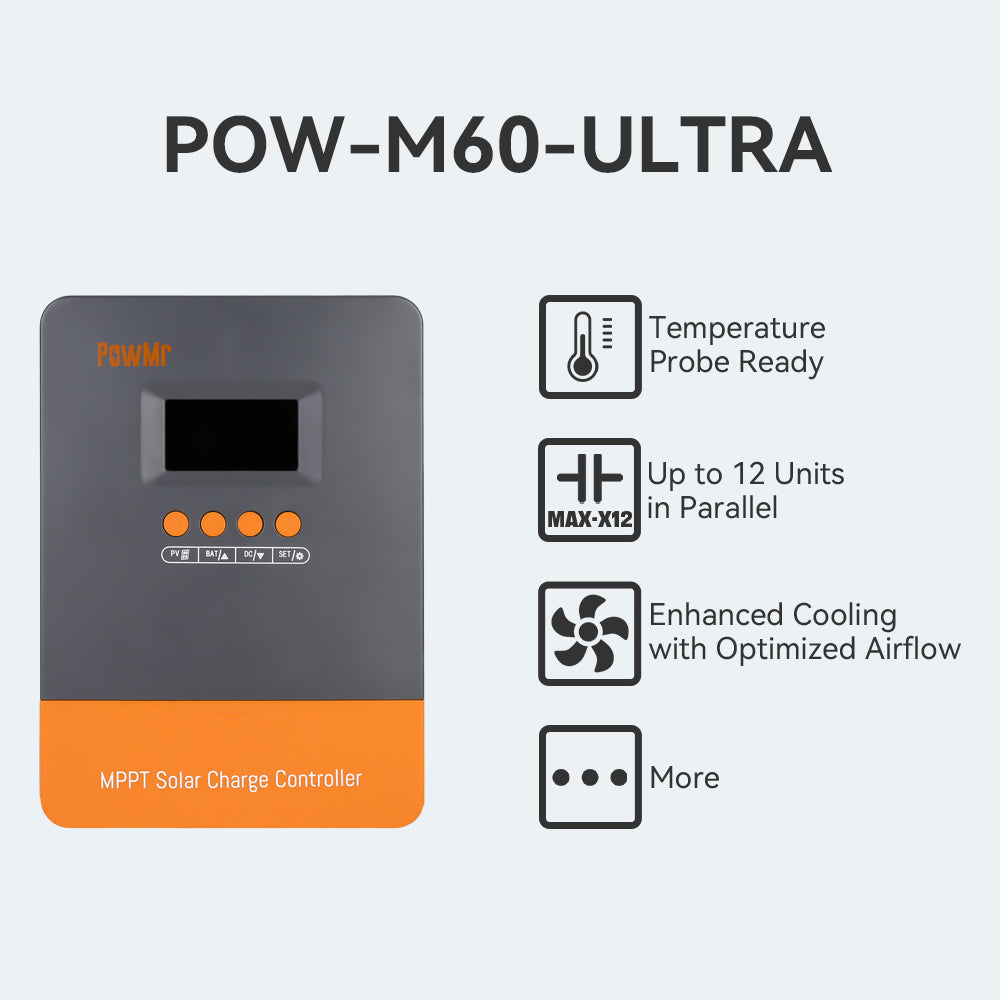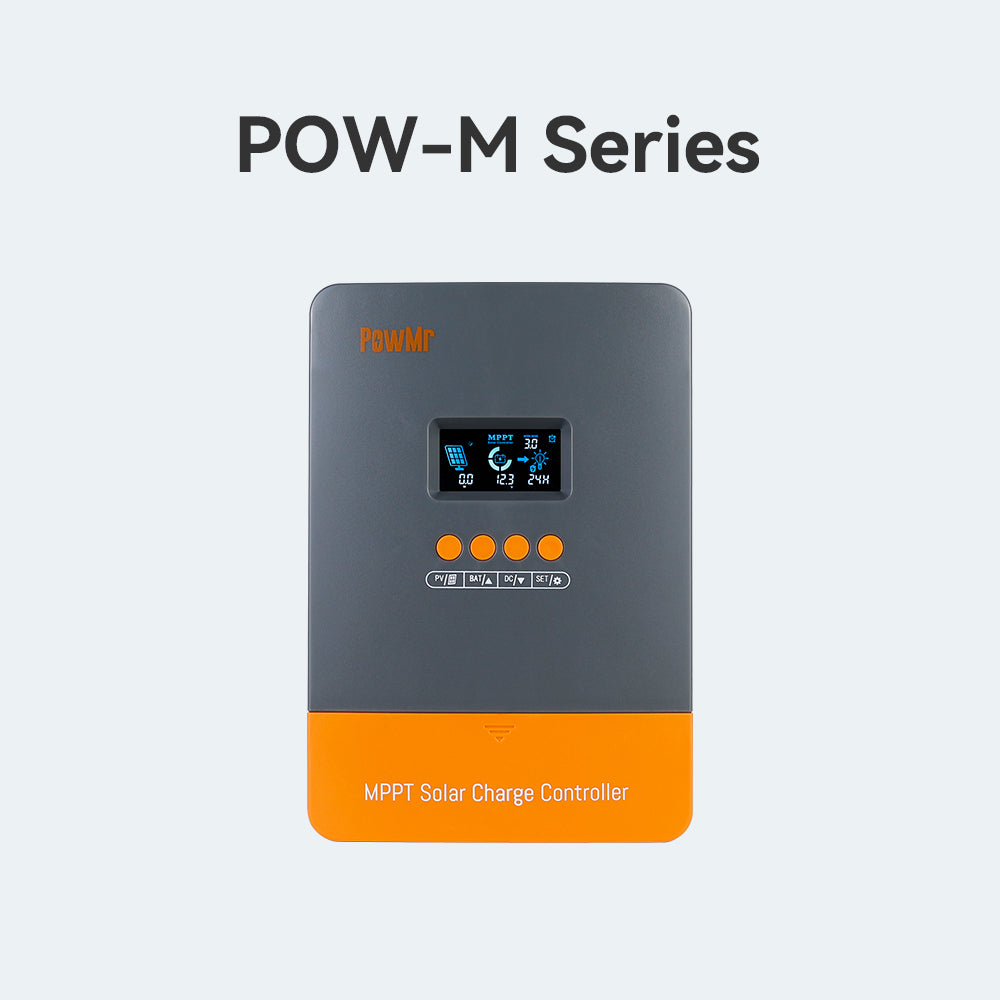Ventajas de los Controladores de Carga MPPT
Los controladores de carga MPPT convierten toda la tensión eléctrica solar posible en electricidad utilizable. Operan a la tensión de potencia máxima (Pmp), que es más alta que la tensión de la batería. La máxima eficiencia de conversión de MPPT es ideal en condiciones de sol intermitente y nubladas, y en clima frío donde aumentan la salida del módulo más que en clima cálido.
Aumento de la Captura de Energía
Los controladores MPPT operan voltajes de arreglo por encima del voltaje de la batería y aumentan la cosecha de energía de los arreglos solares entre un 5 y un 30% en comparación con los controladores PWM, dependiendo de las condiciones climáticas.
La tensión y la corriente de funcionamiento del arreglo se ajustan a lo largo del día mediante el controlador MPPT para que la potencia de salida del arreglo (corriente X tensión) se maximice.
Menos restricciones de módulo
Dado que los controladores MPPT operan arreglos a voltajes superiores al voltaje de la batería, se pueden utilizar con una mayor variedad de módulos solares y configuraciones de arreglos. Además, pueden soportar sistemas con tamaños de cable más pequeños.
Soporte para arreglos de gran tamaño
A diferencia de los controladores PWM, los controladores MPPT pueden soportar arreglos sobredimensionados que de otro modo excederían los límites máximos de potencia operativa del controlador de carga. El controlador hace esto limitando la entrada de corriente del arreglo durante los períodos del día en los que se suministra alta energía solar (generalmente durante el mediodía).
Mientras que la energía del conjunto se limita o se reduce durante el medio del día, el conjunto sobredimensionado puede proporcionar más potencia durante la parte temprana y tardía del día en comparación con un conjunto más pequeño que no está sobredimensionado.
Ventajas de los Controladores de Carga PWM
De hecho, hay casos en los que un controlador PWM puede ser una mejor opción que un MPPT y hay factores que reducirán o anularán las ventajas que el MPPT puede ofrecer. La consideración más obvia es el costo. Los controladores MPPT tienden a costar más que sus contrapartes PWM.
Eficiencia de recolección relativamente constante
Las aplicaciones de carga de baja potencia (específicamente de bajo corriente) pueden tener una recolección de energía igual o mejor con un controlador PWM. Los controladores PWM operarán a una eficiencia de recolección relativamente constante independientemente del tamaño del sistema (todas las cosas siendo iguales, la eficiencia será la misma ya sea utilizando un arreglo de 30W o un arreglo de 300W). Los reguladores MPPT comúnmente tienen eficiencias de recolección notablemente reducidas (en relación con su eficiencia máxima) cuando se utilizan en aplicaciones de baja potencia.
Más económico a temperaturas más altas
El mayor beneficio de un regulador MPPT se observará en climas más fríos (Vmp es más alto). Por el contrario, en climas más cálidos, Vmp se reduce. Una disminución en Vmp reducirá la cosecha de MPPT en relación con PWM. La temperatura ambiente promedio en el sitio de instalación puede ser lo suficientemente alta como para anular cualquier ventaja de carga que el MPPT tenga sobre el PWM. No sería económico utilizar MPPT en tal situación. La temperatura promedio en el sitio debe ser un factor a considerar al elegir un regulador.
Menor costo
Los sistemas en los que la potencia de salida del arreglo es significativamente mayor que la demanda de energía de las cargas del sistema indicarían que las baterías pasarán la mayor parte de su tiempo en carga completa o casi completa. Un sistema así puede no beneficiarse de la mayor capacidad de recolección de un regulador MPPT. Cuando las baterías del sistema están llenas, el exceso de energía solar no se utiliza. La ventaja de recolección del MPPT puede ser innecesaria en esta situación, especialmente si la autonomía no es un factor.







